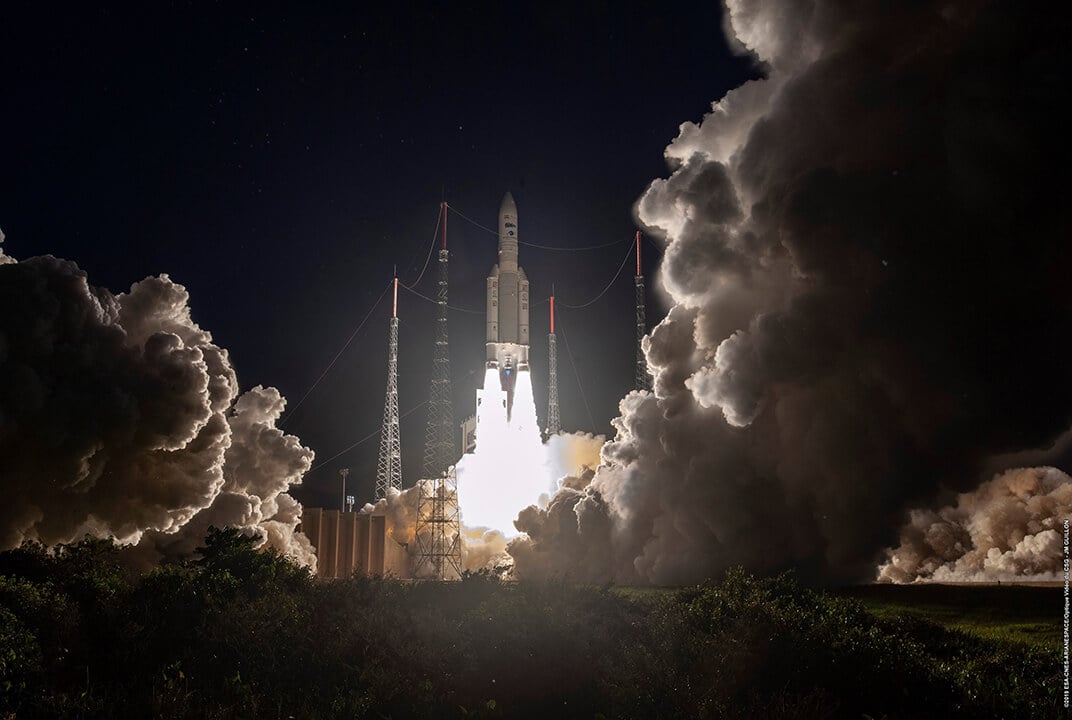Insight | What happens when a rocket disappears from view? Meet the satellite gatekeepers
What happens when a rocket disappears from view? Meet the satellite gatekeepers
Corporate
Many will have watched the recent launch of Inmarsat-5 F3 from Baikonur Cosmodrome in Kazakhstan, but how many have wondered exactly what happens to the satellite once it disappears out of sight? Lasse Thorbo-Steenberg from the LEOP Team explains.
Have you ever wondered what happens to a rocket when it disappears from view? Many will have watched the Inmarsat-5 F3 (I-5 F3) satellite lift off aboard a Proton rocket from Baikonur Cosmodrome on 28 August – but how exactly does Inmarsat ensure its safe transition to geostationary orbit, 35,786 km above Earth, where it will begin powering Global Xpress services over the Pacific Ocean Region?
This is where the Inmarsat Launch and Early Orbit Phase (LEOP) team step in – gatekeepers of Inmarsat’s precious $450m satellite cargo.
The team is responsible for continuously tracking, monitoring and controlling the I-5 F3 satellite as it goes through its various interim orbits and controlled deployment sequences. The LEOP team only steps down once I-5 F3 reaches its final orbital destination and has been readied for in-orbit performance testing.
Worldwide mission support
The core LEOP team is based in the Satellite Control Centre, or Ground System Manager (GSM) at Inmarsat’s City Road, London HQ, and is supported by additional team members at both Perth (Australia) and Paumalu (USA) ground earth stations.
The LEOP setup for this Inmarsat-5 launch differs from normal satellite launch campaigns because the team’s work is directed from the Boeing launch operations in California. For that reason we also have an Inmarsat mission team at Boeing assisting and overseeing the efforts to bring the new I-5 into its designated orbital slot.
In the months leading up to the I-5 F3 launch, a lot of work goes into aligning the various teams for the task and ensuring that all hardware is prepared. Preparations include everything from securing stable data network connectivity between sites to making sure antenna control servo gears are well greased, and electric motor brushes have been checked and are ready for the task at hand.
Behind the scenes on launch day
Following the launch of I-5 F3, the principle role of the Perth and Paumalu ground earth stations is to maintain constant communication with the satellite, via large full motion antennas, as it passes over the respective regions. To ensure complete global coverage of the satellite’s flight path, LEOP antennas have also been outsourced to third-party teleports at Laurentides (Canada) and Fucino (Italy).
GSM in London oversees the operation of maintaining contact with the satellite at all times, as well coordinating with the Inmarsat team at Boeing.
At 12:44 BST on 28 August, as everyone was watching the amazing spectacle of the I-5 F3 launch, the LEOP teams at Paumalu and Perth started a single manning 24/7 roster, which would last the first week of the mission.
Keeping the satellite fleet safe
It is remarkable to know that our Flight Dynamics team provides satellite pointing data accurate to the tenth of a degree, without which the ground station antennas will not pick up any signal from the satellite and it has to been found by scanning the sky for a signal.
Our work continues monitoring and tracking I-5 F3 and we won’t fully rest until it arrives in its orbital slot around the end of October. The spacecraft will then be handed back to the Inmarsat Satellite Control Centre team in London, when payload testing will begin.
About the author
After completing his Masters Degree in Mobile and Satellite Communications, Lasse Thorbro-Steenberg began working at Inmarsat in 2001. His first years were spent developing BGAN in the UK and as an Inmarsat Resident Manager at Cobham SATCOM in Denmark. Upon his return to London he played a key role in evolving BGAN into the full mobility supporting satcom system BGAN is today.
When the Inmarsat Satellite Access Station (SAS) project in Paumalu was initiated, he jumped at the opportunity to move to Hawaii to set up and prepare the SAS for BGAN services over AMER and APAC, taking over as Manager in 2011. During his seven years there, Lasse participated in numerous LEOP campaigns, which led him to develop software used in automating the pointing of backup antennas used by LEOP campaigns.
In July 2015 he moved to a new position as Senior Manager Operations, Evolution, where he will work on ensuring Inmarsat Network Operations remain at the cutting edge of operational concepts and tools.


